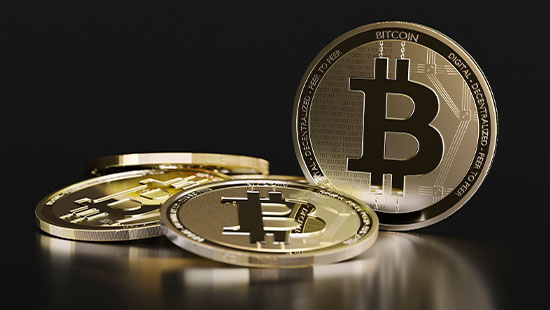How to calculate crypto losses
Content Summary
- Technology

This article was current at the time of publication.
Last year was brutal for the crypto market, losing more than US$2 trillion. The value of Bitcoin fell more than 60 per cent, but it wasn’t the worst performer.
In May 2022, the collapse of a US$26 billion stablecoin, Terra, started to send shockwaves through the market.
In December, one of the largest publicly traded crypto mining companies in the US filed for bankruptcy. Crypto trading platform FTX – once valued at US$32 billion – simply imploded.
Of course, if you’re still game, there are many types of crypto assets and their form and function continue to evolve.
The Australian Taxation Office (ATO) has a wealth of information on transactions involving crypto, as does CPA Australia.
Calculating crypto losses
Andrew Allemand, insolvency expert at Brisbane-based SV Partners, says crypto losses are treated the same as other capital losses like shares.
With crypto, capital gains tax (CGT) events occur when you sell, gift, trade, exchange or swap, convert to fiat currency, or purchase goods or services. The same applies in the event of destruction or the loss or creation of contractual or other rights.
As the ATO notes, crypto, when purchased as an investment (its most common use), is subject to CGT. Transactions such as disposal or exchange or swap are a CGT event and result in either a capital gain or capital loss. Capital losses can be applied against other capital gains but can't be deducted against other income.
If the crypto asset has been held for at least 12 months, individuals may be able to apply the 50 per cent CGT discount when calculating their gains.
If it can be shown that crypto is not being utilised as an investment, in a profit-making scheme, or carrying on a business, and cost less than $10,000 then it may be a personal use asset and not subject to CGT.
If crypto is used as a personal use asset, the loss cannot be considered when calculating a net capital gain to carry forward in future years.
Elinor Kasapidis, CPA Australia’s Senior Manager Tax policy, notes that “the challenge for many tax practitioners is not only ensuring that clients disclose their crypto holdings and transactions come tax time, but also wading through multitudes of transactions to properly calculate CGT.
“The innovative nature of some digital assets can also result in tax uncertainty around certain events or assets such as airdrops or non-fungible tokens,” she says.
Don’t ignore the ATO
The ATO says insolvencies have increased.
“However, we have not noted any specific correlation between cryptocurrency trading and investment,” an ATO spokesperson says.
The regulator has noticed an increase in practitioners failing to ask clients if they have transacted in crypto.
“Where we have high-quality crypto data, we can display an informative pre-fill message in our myTax and agent portals. In 2022, we did this for nearly a million individual tax returns.”
Some clients may believe they are carrying on a business trading crypto. The ATO encourages agents to consider how their clients’ circumstances compare to indicators of carrying on a business as expressed in Taxation Ruling 97/11 Income tax: am I carrying on a business of primary production?.
“While crypto may appear anonymous, we can track money trails back to taxpayers through data from banks, financial institutions, and crypto asset exchanges,” the spokesperson warns.
“We acquire data from some Australian crypto asset exchanges. The data collected between 2019 and 2022 identified more than 1.52 million taxpayers as having transacted with these Australian crypto asset exchanges.
The ATO says more than one-third of people transacted for the first time in 2022.
“We can match this data to an individual to assist people trading in crypto assets to properly account for these transactions and pay the right amount of tax.
“Anyone choosing not to act may receive further scrutiny and an audit of their affairs.”
Crypto fraud rife
The crypto space has garnered an international reputation for being rife with crooks, with Australians duped out of A$242.5 million between January and July 2022. Investment scams were the main culprits, up 314 per cent over the previous year.
“Scammers are opportunistic, [they] prey on people’s insecurities and lack of knowledge,” warns Allemand.
“Cryptocurrency and blockchain technologies are poorly understood by the general public, as many of the terms and associated jargon are complex.
“In insolvency, we are seeing more and more of the older generation investing in crypto and they are typically more at risk of being scammed and do not appear to seek expert advice.”
Allemand recommends looking for exchanges and brokers associated with Blockchain Australia, which is the country’s peak industry network for businesses implementing or evaluating blockchain or distributed ledger technology.
Collectively, Blockchain Australia members and the industries they serve are committed to advancing the adoption of blockchain technology in Australia.
Watch out for ‘celebrities’
“Seek guidance on the type of crypto coin to invest in and understand the value of the underlying blockchain technology underpinning that coin,” Allemand advises.
“There are a lot of dodgy coins that have done the rounds on social media and received ‘celebrity’ endorsements, leading to inflated valuations and, ultimately, poor investments.
“High risk can sometimes mean a high reward, but it’s best to approach these investment opportunities with diligence and caution.
“Accountants may be best advised to direct clients to contact a crypto broker as they can offer some insight into legitimate investment opportunities and direct investors away from potentially fraudulent schemes.
“Using a trusted broker will ultimately reduce the risk and enable safe and successful trading and investing.”
He stresses the imperative of seeking guidance on the safest type of wallet for storing your crypto.
“A good rule to keep in mind and ensure you’re protecting your investment is that if it’s not your wallet, it’s not your crypto,” he says.
“Investors can’t be certain of their holdings unless they’re stored in a wallet for which they alone hold the keys.”
Be warned that the terms and conditions on most crypto exchanges express that custodial wallets held on a centralised exchange are not fully owned by the account holder.
The ATO says the most common assets are coins and tokens such as Bitcoin (a cryptocurrency), USDC (a stablecoin), DAI (an investment token), GALA (a game token), and BAYC (a non-fungible token).
This tax year, practitioners may have some clients with large crypto losses. To calculate CGT, clients will need to have excellent records and it’s worth considering recommending specialist tax software for crypto.
However, if things do go pear-shaped, Allemand recommends being proactive and contacting an insolvency practitioner from a reputable firm as soon as possible.
A holistic approach to taxing digital assets
A joint submission by CPA Australia and CAANZ advocates greater engagement and collaboration between the ATO and taxpayers (and their advisers), to ensure that public guidance and the administration of the tax system are able to stay relevant and keep pace with technological advancements.
Discover more
Public practice warning: AI boom opens the door to cyber crime
The AI boom has opened the door to cyber scams. Here’s how to protect your practice.
- Technology
article·Published onDigital Technology
For Australian and New Zealand practitioners. Boost your firm’s digital know-how in key areas such as cybersecurity, AI tools, crypto taxes, e-invoicing, accounting software, IT systems and more.
- Technology
article·Published onExcel and ChatGPT
5 May 2023 | We evaluate ChatGPT to see if this AI tool accurately answers Excel questions
- Technology
Published on14 min read timeIRD pushes into data matching to tackle black economy
Six-monthly merchant transaction information needed from banks and other payment providers
- Technology
article·Published onFMA ups the ante on cyber security
How financial firms are bearing the brunt of escalating attacks by cybercriminals
- Technology
article·Published onTechnology and cybersecurity
Technology improves business efficiency, cuts costs, improves service delivery and maximises profitability
- Technology


